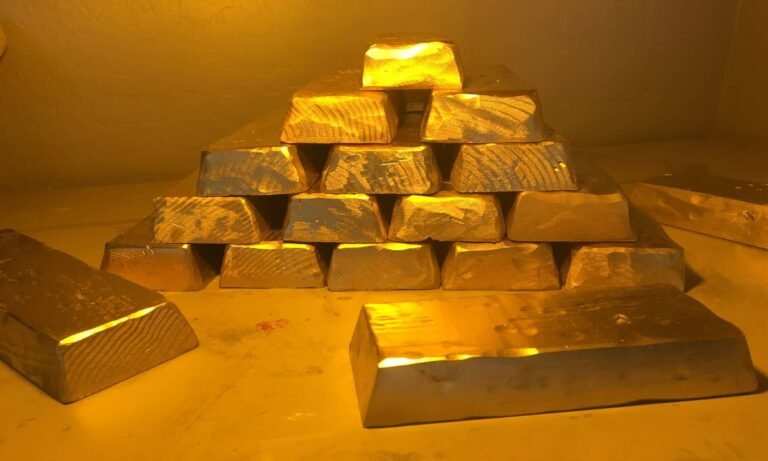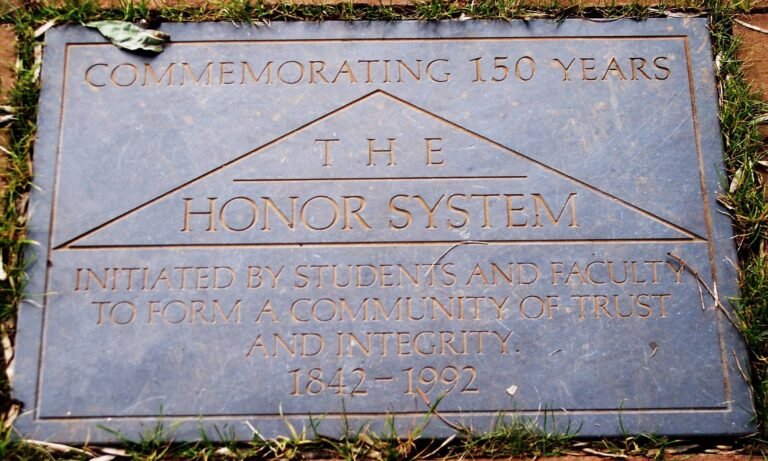Cloud Gate, commonly known as “The Bean,” is a famous public sculpture in Chicago’s Millennium Park. Designed by British-Indian artist Anish Kapoor, the sculpture was unveiled in 2004 and has since become one of Chicago’s most iconic landmarks.
Cloud Gate aka The Bean
Design And Structure
- Form and Appearance
- Cloud Gate is a seamless, highly polished stainless steel sculpture that resembles a giant, liquid mercury drop or a bean, hence its nickname “The Bean.”
- The sculpture measures 33 feet high, 42 feet wide, and 66 feet long, and weighs around 110 tons.
- Surface and Reflection
- The reflective surface of Cloud Gate creates a unique visual experience, distorting and reflecting the Chicago skyline, surrounding park, and visitors in fascinating ways.
- The curvature of the surface provides a variety of perspectives, with the reflections changing as people move around and under the sculpture.
- Construction
- The sculpture was constructed using 168 stainless steel plates, which were welded together and then polished to remove any visible seams.
- The design and construction presented significant engineering challenges, including the need for a seamless surface and the support structure to hold the massive sculpture in place.
Significance And Impact
- Artistic Vision
- Anish Kapoor’s vision for Cloud Gate was to create a “gate” that interacts with the surrounding environment and people, blurring the boundaries between the sculpture and its setting.
- The reflective surface invites viewers to see the world from a new perspective, fostering interaction and engagement.
- Cultural Landmark
- Cloud Gate has become a beloved symbol of Chicago, attracting millions of visitors each year.
- It serves as a popular site for photographs, social gatherings, and cultural events.
- Tourist Attraction
- The sculpture is one of Chicago’s top tourist attractions, drawing visitors from around the world.
- Its central location in Millennium Park makes it easily accessible and a must-see for those exploring the city.
Visitor Experience
- Interactivity
- Visitors can walk around and under Cloud Gate, experiencing the shifting reflections from different angles.
- The “omphalos,” a concave chamber beneath the sculpture, creates unique reflections and acoustic effects, adding to the interactive experience.
- Seasonal Views
- The appearance of Cloud Gate changes with the seasons, reflecting snowy landscapes in winter, blooming gardens in spring, sunny skies in summer, and vibrant foliage in autumn.
- Photographic Opportunities
- The sculpture’s reflective surface makes it a popular subject for photography, offering endless possibilities for creative shots.
- It has become an iconic backdrop for selfies and group photos.
Preservation And Maintenance
- Cleaning
- Maintaining the pristine surface of Cloud Gate requires regular cleaning. It is cleaned twice daily to remove fingerprints and smudges.
- Annual maintenance involves a more thorough cleaning and inspection to ensure the sculpture remains in excellent condition.
- Public Interaction
- Despite being a public artwork that invites touch and interaction, the sculpture’s maintenance team ensures it remains as seamless and reflective as the day it was unveiled.
Anish Kapoor
Anish Kapoor is a renowned British-Indian sculptor celebrated for his innovative and often monumental works that explore themes of perception, space, and the nature of materials. Here’s a detailed look at his life, artistic career, and notable works:
Early Life And Education
- Birth: Anish Kapoor was born on March 12, 1954, in Mumbai, India, to a Hindu father and a Jewish mother.
- Education: Kapoor moved to London in the early 1970s to study art. He attended Hornsey College of Art (1973–1977) and later the Chelsea School of Art and Design (1977–1978).
Artistic Style And Themes
Kapoor’s work is characterized by a fascination with space, voids, and the perception of objects. His use of materials ranges from traditional stone and metal to more experimental mediums like pigment and wax.
- Color and Pigment
- Kapoor gained early recognition with his pigment sculptures in the late 1970s and early 1980s. These works featured piles of brightly colored powders applied to simple geometric forms, creating a sense of otherworldly presence.
- Void and Reflection
- A recurring theme in Kapoor’s work is the void, explored through concave and convex shapes that play with perception and create illusions of depth and space.
- Reflective surfaces, such as polished stainless steel, are used to engage viewers in the act of seeing and being seen, challenging their perceptions of reality.
- Monumental Scale
- Many of Kapoor’s works are large-scale installations and public sculptures, which often become iconic landmarks in their locations.
Notable Works
- Cloud Gate (2004)
- Located in Millennium Park, Chicago, this sculpture is one of Kapoor’s most famous works. Known as “The Bean” for its bean-like shape, it features a seamless, highly polished reflective surface that mirrors the city skyline and the park surroundings.
- Sky Mirror (2001)
- A series of large, concave mirrors installed in various locations, including New York and Nottingham. These mirrors reflect the sky and the environment, creating dynamic and ever-changing images.
- Leviathan (2011)
- A massive, inflatable structure installed at the Grand Palais in Paris for the annual Monumenta exhibition. The work invited viewers to enter and experience its vast interior space, evoking the sense of being inside a living creature.
- Descent into Limbo (1992)
- A work featuring a cube-shaped building with a dark void in the floor. The void appears bottomless, challenging viewers’ perceptions of depth and space.
- Marsyas (2002)
- Installed in the Turbine Hall of the Tate Modern in London, this colossal sculpture consisted of three steel rings connected by a single span of red PVC, creating a powerful, immersive experience.
Awards And Honors
- Turner Prize: Kapoor won the prestigious Turner Prize in 1991, a recognition of his contributions to contemporary art.
- Knighthood: He was knighted in 2013 for his services to visual arts.
- Praemium Imperiale: Awarded by the Japan Art Association in 2011, often considered the Nobel Prize of the art world.
Contributions And Controversies
- Material Innovations: Kapoor has patented a new form of blackest black pigment called Vantablack, which absorbs 99.965% of visible light. This material has sparked controversy and discussions about the ethics of exclusive artistic rights to certain materials.
- Philanthropy: Kapoor is known for his philanthropic efforts, including donations to various cultural and social causes.
What’s More

My Blog (61)
Dependence (5) Fiction (7) Karma (6) Landmarks (4) Paramount (6) Poignancy (5) Spectrum (6) Spotlight (6) Take Off (5) Unique (5) Virtue (6)
Amazing Stuff (9) Beyond Known (8) Controversial (9) Digital World (9) Inequities (8) Innovative (8) Metaphysics (8) Our Society (9) Outer Space (8) Value Creation (9) Yearnings (8)














